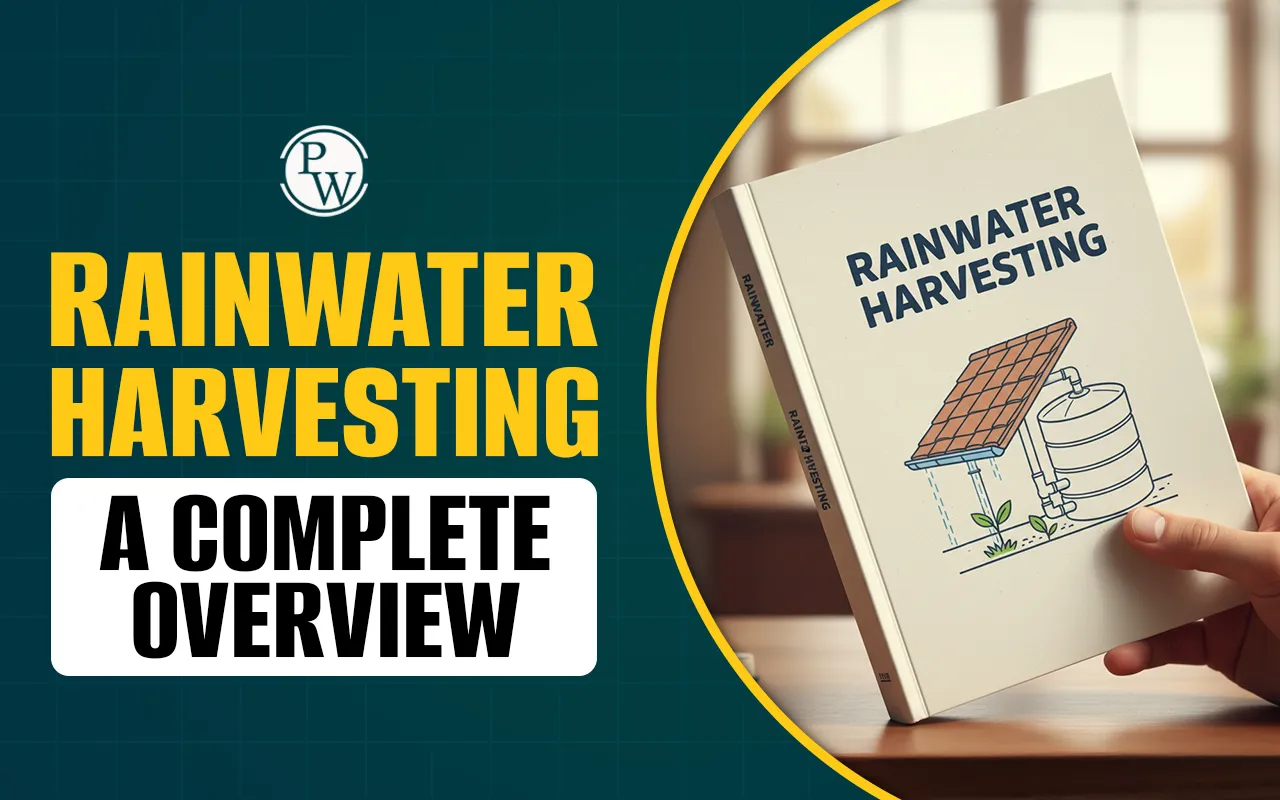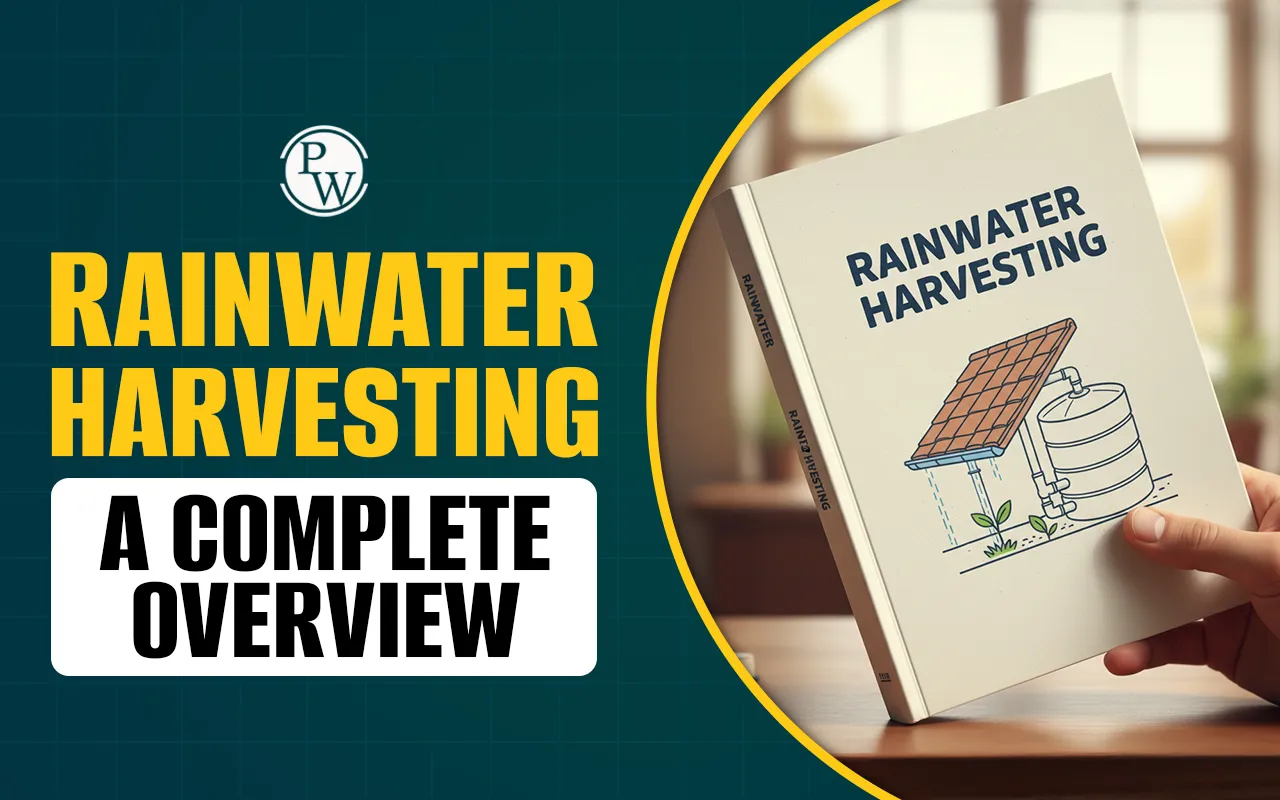

What is Rainwater Harvesting?
Rainwater harvesting refers to the practice of collecting and storing rainwater so that it can be used later for useful purposes. Rainwater typically flows into drains and is eventually wasted, so this method helps capture it from rooftops, covered areas, or open spaces and channelize it into storage tanks or underground reservoirs.
A rainwater harvesting system can be as simple as using buckets to collect water from a roof or can be an advanced setup with pipelines, filtration units, and storage tanks for collection and storage of rainwater. Regardless of the process or scale, the main aim is to conserve water and reduce the load on existing resources.
Why is Rainwater Harvesting Required?
Water is the most essential resource for life, but it is often misused and wasted. An increase in population, rapid urbanization, and climate change pose pressure on freshwater resources, which are gradually being depleted. Rainwater harvesting has emerged as a sustainable and effective method to address this challenge.
Let’s find out why rainwater harvesting has become so important in the present scenario.
Scarcity of Freshwater
A small portion of Earth’s water is available for human consumption. Relying solely on groundwater levels and the municipal supply of water is not a sustainable solution.
Uneven Distribution of Rainfall
The amount of rainfall differs extensively from one region to another. Storage of excess rainwater can help handle the water demand during dry spells.
Rising Urbanisation
There is an increased demand for water in urban households, industries, and agriculture. Rainwater harvesting can ease the burden on conventional sources.
Groundwater Recharge
A properly designed rainwater harvesting system can be used effectively to replenish the underground water resources.
Components of a Rainwater Harvesting System
A typical rainwater harvesting system is designed keeping in mind the effectiveness of its usage. A typical rainwater harvesting system consists of several key components, as mentioned below:
-
Catchment Area: This is the space where rainwater is collected, such as rooftops, courtyards, or open fields.
-
Conveyance System: The rainwater is transferred through pipes, gutters, or drains to get collected to storage units.
-
Filtration System: Water is filtered before use to remove solid impurities. Filters can range from simple mesh screens to advanced sand or charcoal filters.
-
Storage Tank: The collected water is stored in tanks, underground reservoirs, or pits. The size depends on the expected rainfall and water demand.
-
Distribution System: Pumping units or gravity-fed pipes deliver the stored water to various areas for use in irrigation, flushing, washing, or other important purposes.
Read More - Three States of Matter: Solids, Liquids, and Gases
Types of Rainwater Harvesting Systems
Rainwater harvesting systems starts can be broadly classified into two main types based on the rainwater collection system, as explained below:
Rooftop Rainwater Harvesting
It is the method of collecting rainwater from rooftops through gutters and downpipes. The water is then filtered and stored in tanks or used for direct replenishment of groundwater. This is the most common form of rainwater collection system that can be used in homes, schools, and offices.
Surface Runoff Harvesting
In this method, the rainwater flowing over open surfaces like roads, parks, or fields is captured and directed through drain pipes into storage or recharge structures. This method is particularly useful in urban areas where stormwater runoff causes waterlogging and pollution.
Benefits of a Rainwater Harvesting System
The objective of rainwater harvesting is not just about saving water; it’s about sustainability and water security. The advantages of implementing a rainwater harvesting system are explained below:
-
Collected rainwater can be effectively used for non-potable purposes such as gardening, washing, flushing, etc.
-
During extra demand for water due to low rainfall, pipeline breakdowns, or supply shortages, stored rainwater provides a reliable backup.
-
Rainwater harvesting provides a cleaner water source free from dilute chemical contaminants like fluoride or nitrates as found in groundwater.
-
Farmers can use rainwater collection for irrigation, reducing their reliance on erratic monsoons or costly borewells.
-
Using harvested rainwater reduces consumption of groundwater, leading to better preservation of limited freshwater resources.
-
Collecting rainwater reduces flooding in low-level areas, prevents soil erosion, and minimizes water runoff that often carries pollutants.
Read More - Work and Energy - A Complete Guide
Challenges in Rainwater Harvesting
Rainwater harvesting offers immense benefits by providing an easy and effective way of preserving water resources. However, there are some challenges that need to be addressed, as mentioned below:
-
High Initial Cost: Advanced rainwater harvesting systems with sophisticated components involve higher costs, deterring households from adopting them.
-
Maintenance Issues: Proper maintenance is required to avoid clogged pipes, dirty reservoirs, or ineffective filters to maintain the quality and system efficiency.
-
Irregular Rainfall: In areas with unpredictable rainfall, rainwater harvesting may not be very effective to meet the water needs.
-
Public Awareness: Many people are unaware of the long-term benefits of a rainwater collection system. So, awareness campaigns are essential.
The future of water conservation lies in sustainable practices like rainwater harvesting. As water scarcity increases, the necessity of water harvesting systems becomes paramount. With the integration of smart technology, rainwater harvesting systems provide an efficient and accessible way of preserving and consuming this essential resource of life.
Spark Your Child’s Curiosity with Science at CuriousJr
Is your child finding Science difficult to grasp or struggling to stay motivated? At CuriousJr, our science online classes for Classes 3 to 8 make the subject clear, exciting, and easy to learn. We focus on turning doubts into understanding and helping children build a strong base for future studies.
Here’s what makes our science online classes different:
-
Dual-Teacher Support: Live lessons for concept clarity and mentor teachers for 24x7 homework and doubt help.
-
Interactive Learning: Activities and explanations that make Science relatable and interesting.
-
Exam Confidence: Regular practice and revision to make Science a scoring subject.
-
Parent Involvement: Progress reports so you can track your child’s improvement.
With CuriousJr, Science becomes more than a subject, it becomes a skill your child enjoys. Book a demo session today and see the difference.
Rainwater Harvesting FAQs
Why is rainwater suitable for non-potable domestic purposes?
Can rainwater be used for drinking purposes?
Which regions in India use rainwater harvesting as a widespread practice?
What are the traditional methods of rainwater harvesting?
Mention some of the innovative techniques used in rainwater harvesting.













